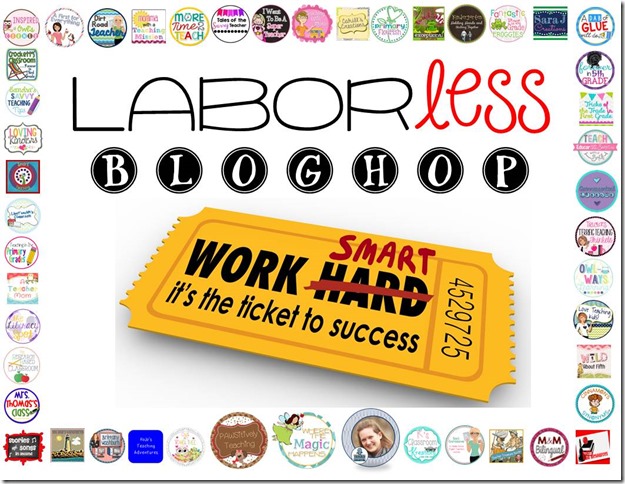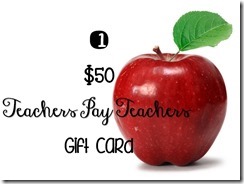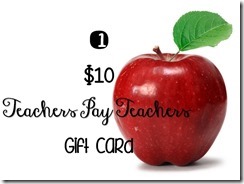What is Phonemic Awareness?
September 27, 2015
Phonemic awareness is the ability to notice, think about, and work with the individual sounds in words. We know that a student's skill in phonemic awareness is a good predictor of later reading success or difficulty. Find out what parents and teachers can do to help children develop this critical literacy skill.
 Before children learn to read print, they need to become aware of how the sounds in words work. They must understand that words are made up of speech sounds, or phonemes.
Before children learn to read print, they need to become aware of how the sounds in words work. They must understand that words are made up of speech sounds, or phonemes.
An important pre-reading skill is phonemic awareness. Children become aware that words are made up of sounds which can be assembled in different ways to make different words. Children build these pre-reading skills by practicing nursery rhymes and playing sound and word games such as learning to hear and recognize rhymed words. Tutoring, workbooks, games, or structured computer programs can help teach or reinforce these skills. Parents help in this process by providing high-quality educational materials, establishing a pattern of daily reading, creating a rich language environment, discussing your child's progress with teachers, and following up on their recommendations.
As this phonemic awareness is developed, children should become interested in how words are portrayed in print. Daily reading sessions with the children following along should help develop their understanding of print concept and feed this curiosity. This interest in decoding the words is the fuel for children learning the alphabet and phonics decoding skills. For more information on teaching phonemic awareness, read the Put Reading First report on Phonemic awareness instruction.
The "What Works?" Report found that the five key areas in learning to read are phonemic awareness, phonics, comprehension, vocabulary, and fluency.
Phonemes are the smallest parts of sound in a spoken word that make a difference in the word's meaning. For example, changing the first phoneme in the word hat from /h/ to /p/ changes the word from hat to pat, and so changes the meaning. (A letter between slash marks shows the phoneme, or sound, that the letter represents, and not the name of the letter. For example, the letter h represents the sound /h/.) Children can show us that they have phonemic awareness in several ways, including:
- recognizing which words in a set of words begin with the same sound ("Bell, bike, and boy all have /b/ at the beginning.")
- isolating and saying the first or last sound in a word ("The beginning sound of dog is /d/." "The ending sound of sit is /t/.")
- blending the separate sounds in a word to say the word ("/m/, /a/, /p/ – map.")
- segmenting a word into its separate sounds ("up – /u/, /p/.")
The phonological processor usually works unconsciously when we listen and speak. It is designed to extract the meaning of what is said, not to notice the speech sounds in the words. It is designed to do its job automatically in the service of efficient communication.
On the other hand, phonological skill is not strongly related to intelligence. Some very intelligent people have limitations of linguistic awareness, especially at the phonological level. Take heart. If you find phonological tasks challenging, you are competent in many other ways!
This fact is well proven: Phonological awareness is critical for learning to read any alphabetic writing system. Phonological awareness is even important for reading other kinds of writing systems, such as Chinese and Japanese. There are several well-established lines of argument for the importance of phonological skills to reading and spelling.
Phoneme awareness predicts later outcomes in reading and spelling.
Phoneme awareness facilitates growth in printed word recognition. Even before a student learns to read, we can predict with a high level of accuracy whether that student will be a good reader or a poor reader by the end of third grade and beyond. Prediction is possible with simple tests that measure awareness of speech sounds in words, knowledge of letter names, knowledge of sound-symbol correspondence, and vocabulary.
The majority of poor readers have relative difficulty with phoneme awareness and other phonological skills.
Instruction in phoneme awareness is beneficial for novice readers and spellers. Instruction in speech-sound awareness reduces and alleviates reading and spelling difficulties. Teaching speech sounds explicitly and directly also accelerates learning of the alphabetic code. Therefore, classroom instruction for beginning readers should include phoneme awareness activities. Phonological awareness interacts with and facilitates the development of vocabulary and word consciousness. This argument is made much less commonly than the first four points. Phonological awareness and memory are involved in these activities of word learning:
- Attending to unfamiliar words and comparing them with known words
- Repeating and pronouncing words correctly
- Remembering (encoding) words accurately so that they can be retrieved and used
- Differentiating words that sound similar so their meanings can be contrasted
Learning to read has a sequence. If a student is forced to try to learn skills that he or she does not yet have the foundation for, he or she might become frustrated and lose confidence. Parents should get a sense of what the right sequence is so that they do not inadvertently frustrate their child. Prior to learning to decode words with phonics, there are a few important pre-reading skills.
Happy Teaching-Have a great week!

Labels:beginning readers,Guided Reading,reading | 1 comments
What is Guided Reading?
September 14, 2015
 As a special education teacher, I spend most of my small group reading time doing guided reading. Those students who need comprehension work over phonics, this the best way to get students to read at grade level. It does take planning and thinking about where students are going. One thing that has become a great help in planning is my Fountas & Pinnell Guided Reading Questions and Checklist (click on the picture). It has the reading levels A-Z. I use them when I'm planning groups and looking forward to where they are headed. I use it for daily targets and cross them off when students have mastered a skill. Click on the picture to go to my store.
As a special education teacher, I spend most of my small group reading time doing guided reading. Those students who need comprehension work over phonics, this the best way to get students to read at grade level. It does take planning and thinking about where students are going. One thing that has become a great help in planning is my Fountas & Pinnell Guided Reading Questions and Checklist (click on the picture). It has the reading levels A-Z. I use them when I'm planning groups and looking forward to where they are headed. I use it for daily targets and cross them off when students have mastered a skill. Click on the picture to go to my store.Guided reading is a procedure that enables the teacher to observe, teach and support a small group of children as they develop an understanding of the reading processes and put into practice their literacy skills. The group reads a book which has been carefully selected based on students' strengths and needs. The teacher facilitates discussion and guides and directs the readers. Groups are formed according to children’s needs and the purpose of the session.
Essential Components of Guided Reading
1. Explicit small group instruction2. Text matches student’s reading instructional levels and are selected by the teacher
3. Teacher introduces a new book
4. Each child reads the whole text and applies known strategies (the goal is for the student to eventually read the book silently and independently)
5. Teacher assists students in developing self-extending strategies (strategies that the student knows and continues to extend or improve on and apply in different situations)
6. Children are grouped and regrouped based on ongoing assessment of students reading level and strategy growth
Objectives:
• To teach reading strategies while engaging in meaningful reading and writing• To model strategy use that will facilitate students becoming self-extending readers
• To teach letter/sound relationships within the context of a text as well as with alphabet drill
• To practice fluent reading
• To utilize daily running records as a monitor of student progress, data-driven acceleration within flexible groups, and cue and strategy use
• To scaffold strategy use by readers that allows for “cutting edge” growth
• To provide a supportive, successful reading time that allows students to perceive themselves as readers and writers
Traditional vs. Guided Reading Groups: What’s the Difference?
Traditional Guided Reading
o Groups remain stable in a composition; progress through the same phase at the same rateo Groups are based on general ability
o One kind of grouping prevails
o Students progress through a fixed sequence of books and skills
o Introduction focuses on new vocabulary
o Selections are usually read once or twice
o Skills practice follows reading
o Focus is on the lesson, not the student
o Teachers follow prepared “script” from a teacher’s guide
o Questions are generally limited to factual recall
o Teacher verifies meaning
o Students take turns reading orally
o Students respond to story in workbooks or on prepared worksheets
o Readers are dependent on teacher direction and support
o Students are tested on skills and literal recall at the end of each story unit
o Evaluation based on progress through a set group of materials and tests
o Groups are dynamic, flexible and change on a regular basis
o Groups are based on strengths in the reading process and the appropriate level of text difficulty
o Groupings for other purposes are used
o Books are chosen at the appropriate level for each group; there is no prescribed sequence and books may overlap but generally are not the same for every group
o Difference in sequence of books is expected
o Introduction focuses on meaning with some attention to new and interesting vocabulary
o Many frequently used words but vocabulary is not artificially controlled
o Selections reread several times for fluency and problem solving
o Skills practice is embedded in shared reading skills; teaching directly related to text
o Questions develop higher order thinking skills and strategic reading
o Teacher and student interact with the text to construct meaning
o Students read entire text silently or with a partner
o Focus is on understanding meaning and the strategies used to construct it
o Students respond to story though personal and authentic activities
o Students read independently and confidently
o Assessment is ongoing and embedded in instruction
o Assessment is based on daily observation and systematic individual assessment
Guided Reading Lessons with Experimental Readers
Experimental Reader
Before Reading
Lesson focus: From ongoing assessment in previous lesson ask:• What knowledge and understandings do students already have about reading?
• What strategies are students using to read?
• What attitudes do students have about reading?
• What do students need to know next?
• What reading behaviors need to be reinforced?
Select an appropriate book or text to match the purpose of the lesson. The purpose could be to introduce or develop further understanding of a story, a topic, a theme, an author, language patterns, or conventions, or a particular reading strategy.
Introduction
• Set purpose for reading by discussing title and main idea• Provide any essential knowledge that will assist their understanding of new concept or vocabulary
• Link prior knowledge and experience
• Talk through the story looking at pictures and asking students to make predictions
• Engage students by asking critical thinking questions as they “walk and talk” through the pictures
• Call attention to frequently used words of new vocabulary
During Reading
Read the Text
• Read the text together (e.g. choral, echo, or shadow reading)• Model, prompt, and reinforce the use of reading strategies
• If appropriate, set a focus question and ask students to whisper read a section of the text (1-2 pages)
• Discuss the story by first answering the focus question
• Elicit further discussion by asking students to ask some of their own questions
• Continue this format to read the remainder of the text
• Revisit the text to confirm or revise predictions
• Talk about strategies used to gain understanding, e.g. how did you work that out?
After Reading
Reflect
• Model and elicit a brief group retell to foster comprehension through prompts, use of text, and illustrationsRespond-- skills & strategy lesson
• Teach skill/ strategy lesson based on assessment and individual observation obtained from reading of text
• Confirm and adjust predictions as a group
• Engage student in self- assessment
• Practice and reinforce high frequency word in second reading
• Reinforce reading strategies
• Reread one or more times to promote fluency
Extend
• Elicit response in a variety of ways: discussion, question and answer, etc.• Offer opportunities for students to respond through writing, drawing, painting, dramatizing, etc.
Revisit: Encourage students to:
• Reread/practice familiar text• Reread as a group or independently
• Reread independently at home to a parent
Assessment
• Running records should be done weekly on seen text for which instruction was providedGuided Reading Lessons with Early Readers and Transitional Readers
Early Readers Transitional Reader
Before Reading
Lesson focus: From ongoing assessment in previous lesson ask:• What knowledge and understandings do students already have about reading?
• What strategies are students using to read?
• What attitudes do students have about reading?
• What do students need to know next?
• What reading behaviors need to be reinforced?
Select appropriate book or text to match the purpose of the lesson. The purpose could be to introduce or to develop further understanding of a story, a topic, a theme, an author, language patterns, or conventions, or a particular reading strategy.
Introduction:
• Set purpose for reading by having students read the title, author, look at illustrations and predict main idea• Link prior knowledge and experience
• Provide any essential knowledge that will assist their understanding of new material concepts or vocabulary
• Engage students by asking critical thinking questions and guiding them to pose their own critical questions
During Reading
Read the text:
• set a focus question and ask students to whisper read or read silently a section of the text (gradually increase the length of the portion read)• Elicit other questions from students
• Expect students to begin using reading strategies with less guidance
• Confirm or revise predictions
• Reread one or more times to promote fluency
• Talk about strategies used to gain understanding, e.g. how did you work that out?
• Encourage students to complete the reading of the text independently
After Reading
Reflect:
• Guide students to retell story including beginning, middle, end, characters, sequence of events, main idea, and supporting details without support of text or pictures• Model summarization and making inferences using narrative and expository text
• Model summarizations, inference making, compare/contrast, cause effect, problem/solution using narrative and expository text
Respond-Skill/Strategy:
• Teach skill/strategy lesson based on assessment and individual need obtained from ongoing assessment. Check for understanding by asking students to support answers based on text• Discuss reading strategies
• Engage in discussion and student in self-assessment
• Revisit prediction and critical thinking questions
• Discuss different student interpretations of text
Extend
• Elicit responses in a variety of ways: discussion, journal entry, illustration, diary, story maps, written summaries, plot profiles, literacy letters, reports writing, project work, drama• Retelling, either from the original text or with variation (e.g., change the point of view, change the form, change a character, or change the ending)
• Lead the students in shared responses. Shared responses provide a real audience for responses and encourage a high standard of presentation.
Revisit
• Provide students with multiple opportunities to read independently in school and or at homeAssessment
• Monitor student comprehension and strategies weekly through miscue analysis, written responses, individual cloze activities, story maps, plot profiles, oral reports or student self-as.

Labels:Guided Reading,reading | 0
comments
LaberLess Giveaway--Work Smarter not Harder
September 07, 2015
 Hello everyone!
Hello everyone!
ARE YOU REAAADDDY!!!
It is Finally here!
All of us have been thinking about good ways in which to treat our readers and followers. We thought hard, and I mean it! Really, really hard… and decided that we can treat you to our best ideas to work smarter rather than harder… at school and home!
I know what it takes to be a great teacher, the stress, the time, the energy… I could go on and on! I also know that we crave time to ourselves and our families.
So here I go!

This year I'm at a new building in a new district. Everyone on the team is new as well-some of us have elementary experience. How to make a new special education team work smart???
Goggle--Google Docs, Google Spreadsheets, Google everything. The team uses it to communicate with each other because we are going in like 20 different directions at one time. No team has that problem! Our weekly business meeting have had a habit of becoming a two hour event-I don't have that kind of time. The previous team started with these things but we have made changes to them so we are more efficient-like a structured agenda with new and old business. Last week we were done in an hour and everyone knew what they needed to get done by next week.

After a year of looking I have found a place to move into. The downside is that I don't a huge outside space. I love to cook. I love this idea because I have windows having fresh herbs or flowers to cook with. Fresh is always better than dried. Beside that mess good.

Many of my students have problems break apart a word and then blend it back together. To them I created these nonsense words practice cards to target two skills at once-saying the sounds and then blend it to say it. My students DIBELS scores have increased both their PSF (phoneme segmentation fluency) and NWF (nonsense word fluency). Click on the picture to go to my Teachers pay Teachers page.
Have a great week.

Top all these great tips and ideas with these top-notch prizes!
A $100 gift card to Amazon

A $50 gift card to TpT
2 $25 gift cards to TpT

1 $10 gift card to TpT
Thank you for reading! And now don't be silly and get your hands all over this awesome giveaway!!
a Rafflecopter giveaway
Labels:Linking Party | 0
comments
September Pinterest Linkly
September 03, 2015
 Its been a very bust weeks of school. All the special education staff in my building are either new to the district or to teaching. I have spent most of my time finding ways to support the classroom teachers. Not know what kind of support they have had in the past-most seem very thankful to the support and sharing of knowledge. With that in mind I would like the share three of the pins that I have past on to them. Finding easy to understand information that doesn't require a special education degree is hard.
Its been a very bust weeks of school. All the special education staff in my building are either new to the district or to teaching. I have spent most of my time finding ways to support the classroom teachers. Not know what kind of support they have had in the past-most seem very thankful to the support and sharing of knowledge. With that in mind I would like the share three of the pins that I have past on to them. Finding easy to understand information that doesn't require a special education degree is hard.
Dyslexia goes back to a students ability to read. In Colorado, we don't have an educational label for dyslexia. But that doesn't stop teachers for looking to new ideas to help student out. This pin has several great ideas that my K-2 teachers very excited to try out once they get up and running small groups.
The teachers I work with are always looking for information about ADHD and how best to work with these students. This pin gives teachers ideas on how to work with these kidoos. In most cases it boils down to classroom management and building in brain breaks for the whole classroom. FYI: Best practices are brain breaks are great for all students!
Like every where else, my building has seen an increase in students with an educational label of autism. My teachers have said they are one of the most difficult students to work with because what works for one may not work of another in the same class. This is difficult but do able. This pin has some great ideas. For more great ideas to support classroom teachers or find special education resources visit me on Pinterest at click here.
Have a great week.

Subscribe to:
Posts
(Atom)

About Me
Welcome to my all thing special education blog. I empower busy elementary special education teachers to use best practice strategies to achieve a data and evidence driven classroom community by sharing easy to use, engaging, unique approaches to small group reading and math. Thanks for Hopping By.
Resource Library
Thank you! You have successfully subscribed to our newsletter.
Search This Blog
Labels
21st Century
apps
Autism
back to school
beginning readers
best practices
Bloom's Taxonomy
books to read
classroom
common core
comprehension
data
DIBELS
differentiation
ELL strategies
fluency
Formative Assessment
Fountas and Pinnell
freebie
Guided Reading
IEP
intervention
Just Words
lesson plan
math
parents
phonics
Progress monitoring
reading
Reading Comprehension
RTI
small group
special education
teaching
technology
vocabulary
Wilson Reading System
writing




















